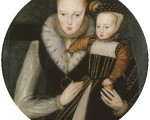
On this day in history events for week 21-27 September.
[Read More...]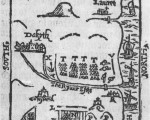
The Battle of Pinkie Cleugh, also known as the Battle of Pinkie, took place near Musselburgh, in Scotland, on the banks of the River Esk, on 10th September 1547. It was a battle of the “War of the Rough Wooing”, so called because it started when Henry VIII tried to force Scotland to agree to a marriage between his son Edward and the infant Mary, Queen of Scots.
[Read More...]
As part of Gareth Russell’s book tour for “A History of the English Monarchy: From Boadicea to Elizabeth I”, I’m delighted to welcome Gareth to the Tudor Society today, which is his home from home anyway! I hope you enjoy his article and please see the bottom of this post for details on how to enter the giveaway for a copy of his wonderful book. Over to Gareth…
Elizabeth I’s decline began in her moment of apotheosis. The defeat of the Spanish Armada coincided with the death of Robert Dudley, Earl of Leicester. In the middle of the victory celebrations, the Queen received the news that her childhood friend-turned-adult-love had passed away and she was heartbroken. It has long been surmised that Elizabeth would have married Leicester had he not already been married and his first wife, Amy Dudley (née Robsart), had not then been found dead in circumstances that looked suspiciously like murder or suicide. However, during a bout of serious illness when she thought she was about to die, Elizabeth made a point of denying that she had ever taken Leicester into her bed, no matter how much she loved him. Despite mountains of speculation then and since, there is in fact no firm evidence at all to suggest that Elizabeth I was not a virgin as she claimed. The risk of pregnancy, the loss of her reputation, death in childbed or yielding her authority to a man made celibacy by far her safest choice. We will never know, of course, what happened every day and night of her life, but it is worth pointing out that it should not be taken as axiomatic, as it too often is, that Elizabeth Tudor lied about her life-long virginity.
[Read More...]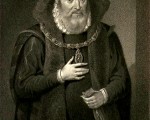
On 23rd August 1548, Francis Talbot, 5th Earl of Shrewsbury, arrived at the Siege of Haddington, in East Lothian, Scotland, with a large army.
The siege was actually part of a series of sieges at Haddington, which were all part of the Anglo-Scottish war known as the War of the Rough Wooing, so named because it was had been started in 1543 by Henry VIII in a bid to secure a marriage agreement between England and Scotland, between Prince Edward and Mary, Queen of Scots.
[Read More...]
Louis XI chose Amboise as the royal residence of his consort, Charlotte of Savoy, and their son,the dauphin (future Charles VIII), was born at the château in 1470. It soon became a favourite royal residence and was one of the homes of The French court from Louis XI to Francis I.
[Read More...]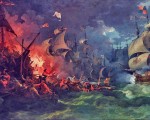

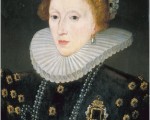
Elizabeth I was born on 7 September 1533 at Greenwich Palace. She was the daughter of Henry VIII and his second wife Anne Boleyn. Her mother was executed for alleged adultery and treason in May 1536 and within two months of her mother’s death Parliament had confirmed that Elizabeth’s parents’ marriage was invalid and that Elizabeth was illegitimate.
In 1547, following her father’s death, Elizabeth moved in with her stepmother the Dowager Queen Catherine Parr, and her husband Thomas Seymour. There, she became involved in a scandal with Seymour, who would visit Elizabeth’s chamber, dressed only in his night-gown, and proceed to tickle and stroke the teenaged girl. Eventually, Catherine arranged for Elizabeth to go and live with her good friends, Sir Anthony Denny and his wife at Cheshunt. Catherine died in September 1548, following the birth of her daughter, and Seymour was executed in March 1549 for allegedly plotting to control his nephew Edward VI and to remove his brother, Edward Seymour, Lord Protector, from power.
[Read More...]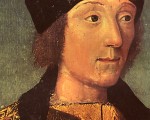
The Battle of Bosworth has gone down in record as one of the most pivotal battles in English history. The aftermath of the battle changed the course of England and saw a new monarch and dynasty come to the throne.
The 1st of August 1485 was to be the day that Henry Tudor would finally leave France after fourteen years of exile in Brittany and France aiming to lay claim to the English throne. He set sail from Harfleur, France accompanied by approximately 400 Englishmen, 800 Scots and approximately 1500 French troops. The exact number of French troops is hard to estimate as different reports record different numbers.
[Read More...]